New Partner in EHRI: Kazerne Dossin from Belgium
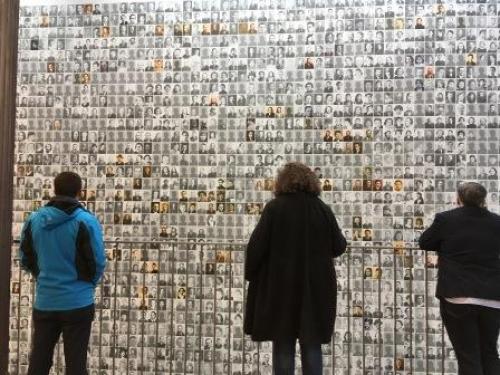
EHRI’s newest consortium partner Kazerne Dossin is a unique place to remember the Holocaust in Belgium. Over 25,500 Jews, Roma and Sinti were imprisoned here, put onto trains and deported mainly to Auschwitz-Birkenau. Less than 5 percent survived. The museum has been built opposite the barracks to shine a new light on this symbolic place of remembrance. Kazerne Dossin explores one of the darkest pages in Belgium’s history, while also examining human rights in their contemporary context. The Memorial, Museum and Documentation Centre on Holocaust and Human Rights informs, remembers and warns against exclusion, discrimination and mass violence, in the past and today.
Kazerne Dossin and EHRI
Before getting involved in EHRI, Kazerne Dossin’s website provided information about less than twenty collections of its rich holdings. Being contacted by EHRI during EHRI’s first phase (2010-2015) resulted in a serious boost, with Kazerne Dossin providing well over 250 archival descriptions by the launch of the EHRI portal in 2015. Partly thanks to the expertise that has been built with EHRI’s feedback, Kazerne Dossin started to unlock its holdings in an online database following archival standards.
Since 1 July 2016, Kazerne Dossin became an EHRI consortium partner. Veerle Vanden Daelen, newcomer at Kazerne Dossin, but already active since 2011 in the EHRI project, leads the Data Identification and Integration Work Package (WP9). Kazerne Dossin also participates in Work Package 10, which is about Resource Identification and Integration Workflows
Deportation lists and portraits of deportees online accessible
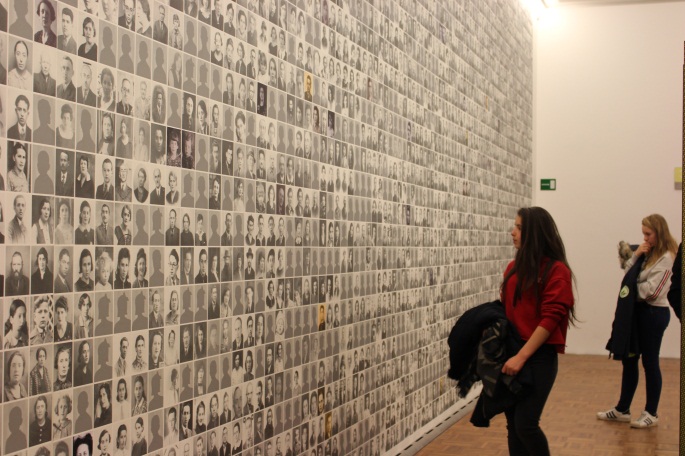 On 27th January, the International Day of Commemoration in memory of the victims of the Holocaust, the database with available portraits of victims and deportation lists from Mechelen will be opened up to the public. The portrait wall that spreads out over four floors in the museum of Kazerne Dossin, might well be the most impressive feature of the permanent exhibition. In order of transport, each victim has been appointed a place on the wall. Whenever possible, a portrait of the victim is added: pictures of deportees who did not survive are shown in black and white, pictures of survivors are shown in sepia. This way, the wall visibly stresses the painful fact that only five percent of the victims survived.
On 27th January, the International Day of Commemoration in memory of the victims of the Holocaust, the database with available portraits of victims and deportation lists from Mechelen will be opened up to the public. The portrait wall that spreads out over four floors in the museum of Kazerne Dossin, might well be the most impressive feature of the permanent exhibition. In order of transport, each victim has been appointed a place on the wall. Whenever possible, a portrait of the victim is added: pictures of deportees who did not survive are shown in black and white, pictures of survivors are shown in sepia. This way, the wall visibly stresses the painful fact that only five percent of the victims survived.
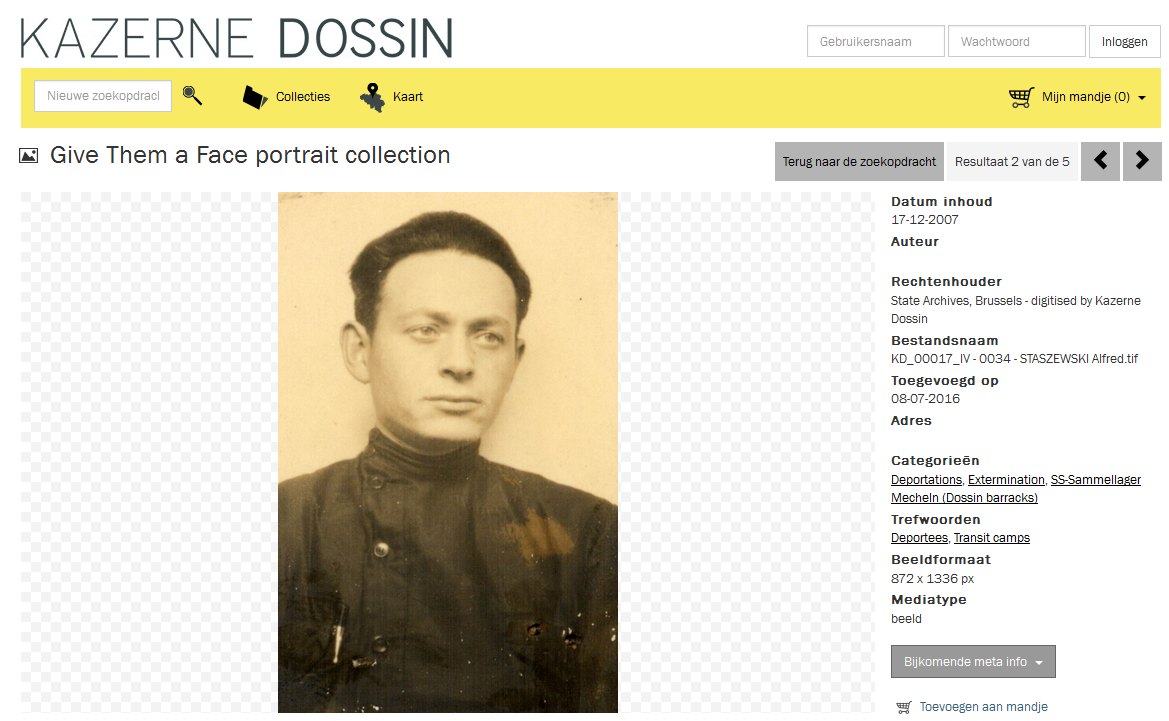 At the moment, Kazerne Dossin has access to 19,681 portraits of Jews, Roma and Sinti who were deported from Mechelen to Auschwitz-Birkenau, Buchenwald, Ravensbrück, Bergen-Belsen and Vittel. Each year since the opening of the museum, Kazerne Dossin can add around one hundred portraits to the wall thanks to kind donations of family, friends, researchers, memorials etc. By opening up the database, Kazerne Dossin hopes to find more missing portraits, with the ultimate goal to give all the victims (+25,500) a face on the wall.
At the moment, Kazerne Dossin has access to 19,681 portraits of Jews, Roma and Sinti who were deported from Mechelen to Auschwitz-Birkenau, Buchenwald, Ravensbrück, Bergen-Belsen and Vittel. Each year since the opening of the museum, Kazerne Dossin can add around one hundred portraits to the wall thanks to kind donations of family, friends, researchers, memorials etc. By opening up the database, Kazerne Dossin hopes to find more missing portraits, with the ultimate goal to give all the victims (+25,500) a face on the wall.
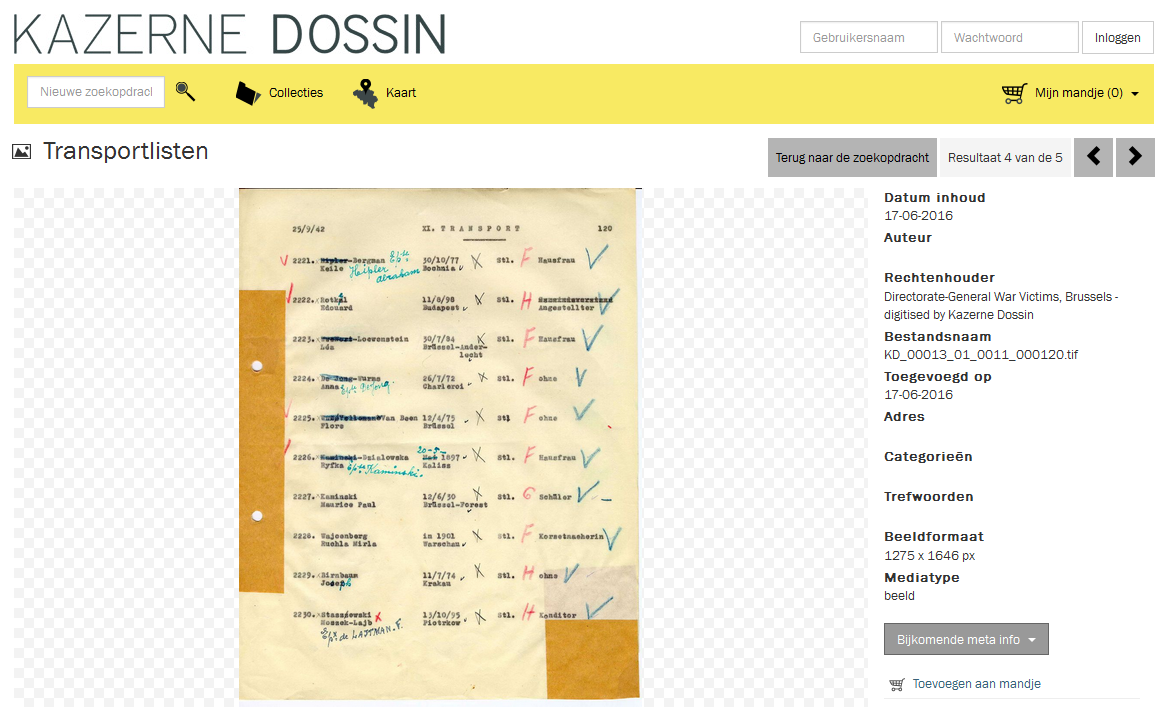 Next to the portraits, the database also contains the lists of the 28 train transports that left from Mechelen between August 1942 and July 1944 to Auschwitz-Birkenau and the smaller transports to the camps of Ravensbrück, Bergen-Belsen, Buchenwald and Vittel.
Next to the portraits, the database also contains the lists of the 28 train transports that left from Mechelen between August 1942 and July 1944 to Auschwitz-Birkenau and the smaller transports to the camps of Ravensbrück, Bergen-Belsen, Buchenwald and Vittel.
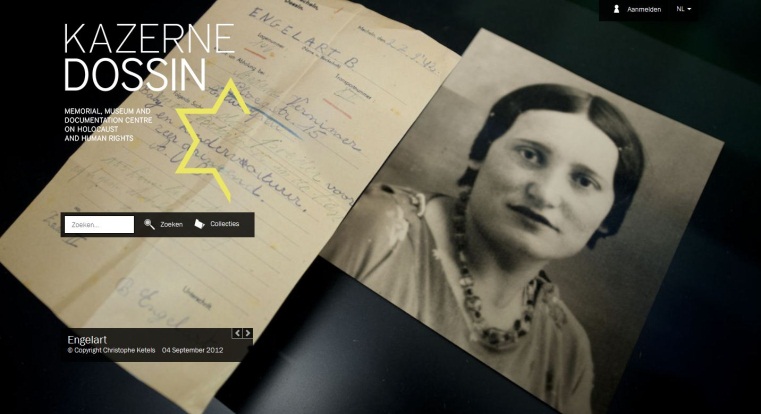 Anyone can look up a name of a victim in the database. If the person was registered at Kazerne Dossin during the Second World War, the portrait (if available) and the transport list on which the victim was listed, will be shown. For further information on the victim, one can always contact archives@kazernedossin.eu.
Anyone can look up a name of a victim in the database. If the person was registered at Kazerne Dossin during the Second World War, the portrait (if available) and the transport list on which the victim was listed, will be shown. For further information on the victim, one can always contact archives@kazernedossin.eu.
The database will be accessible from www.kazernedossin.eu as of January 27th.
Look here for the online database.
Images: ©Kazerne Dossin
